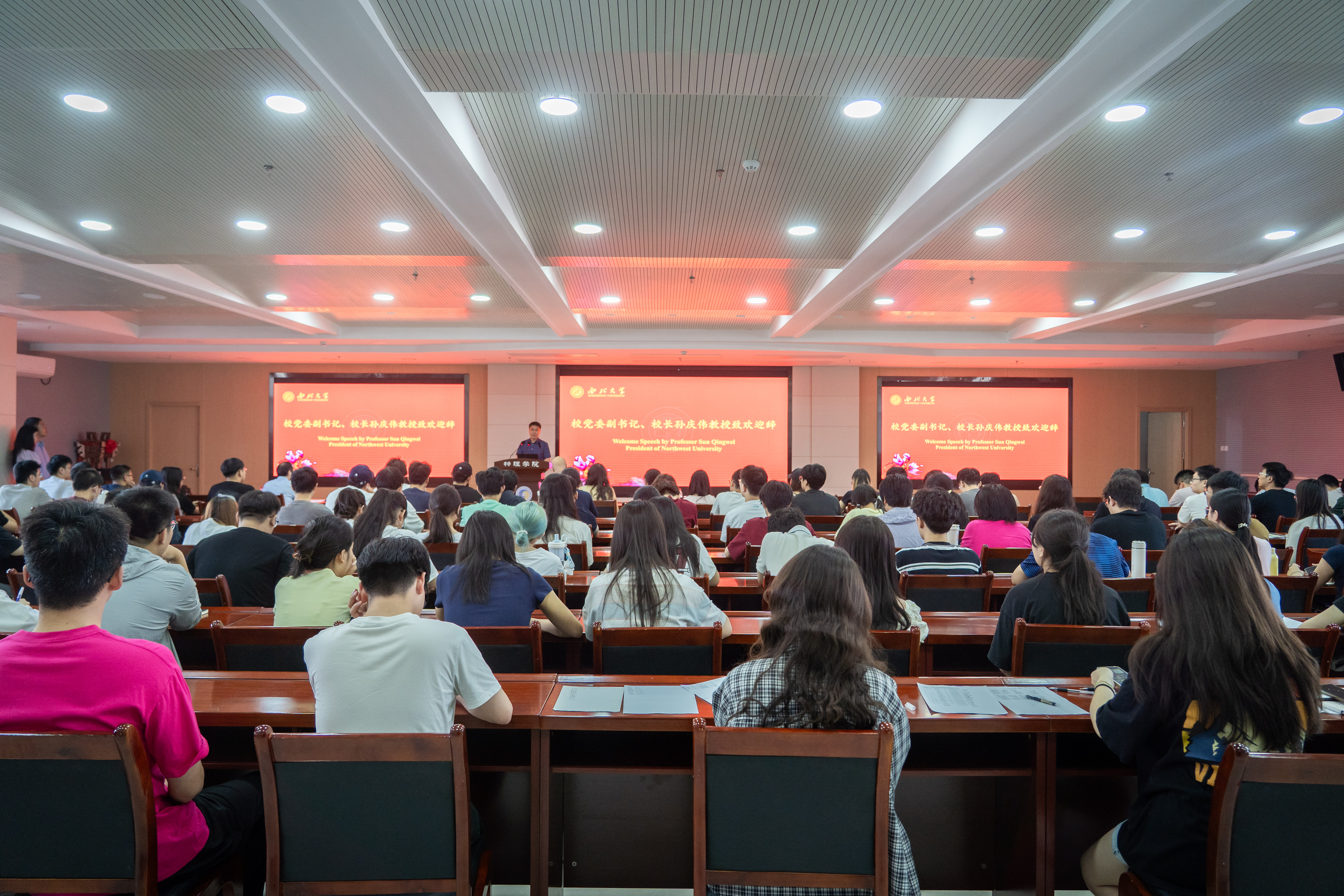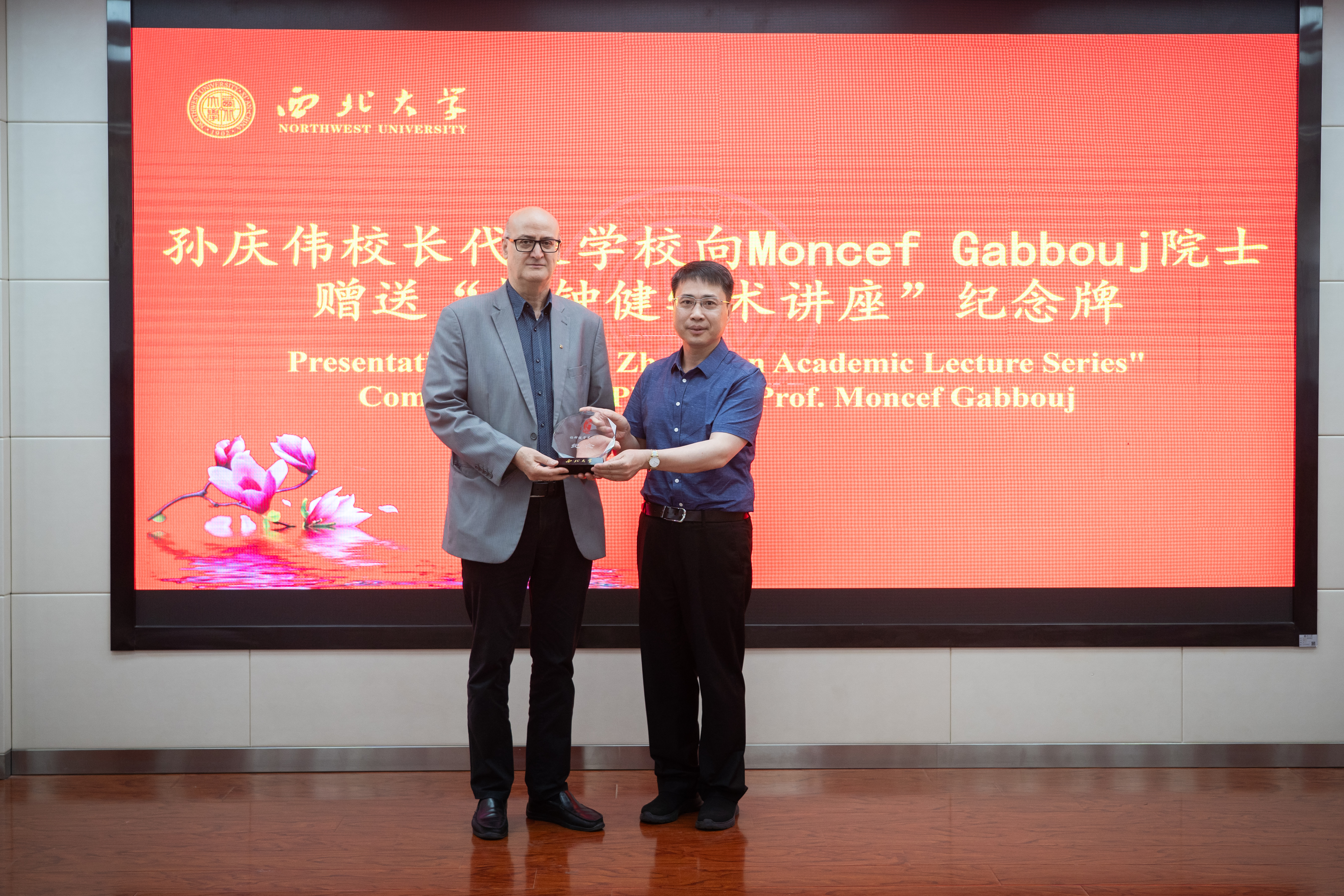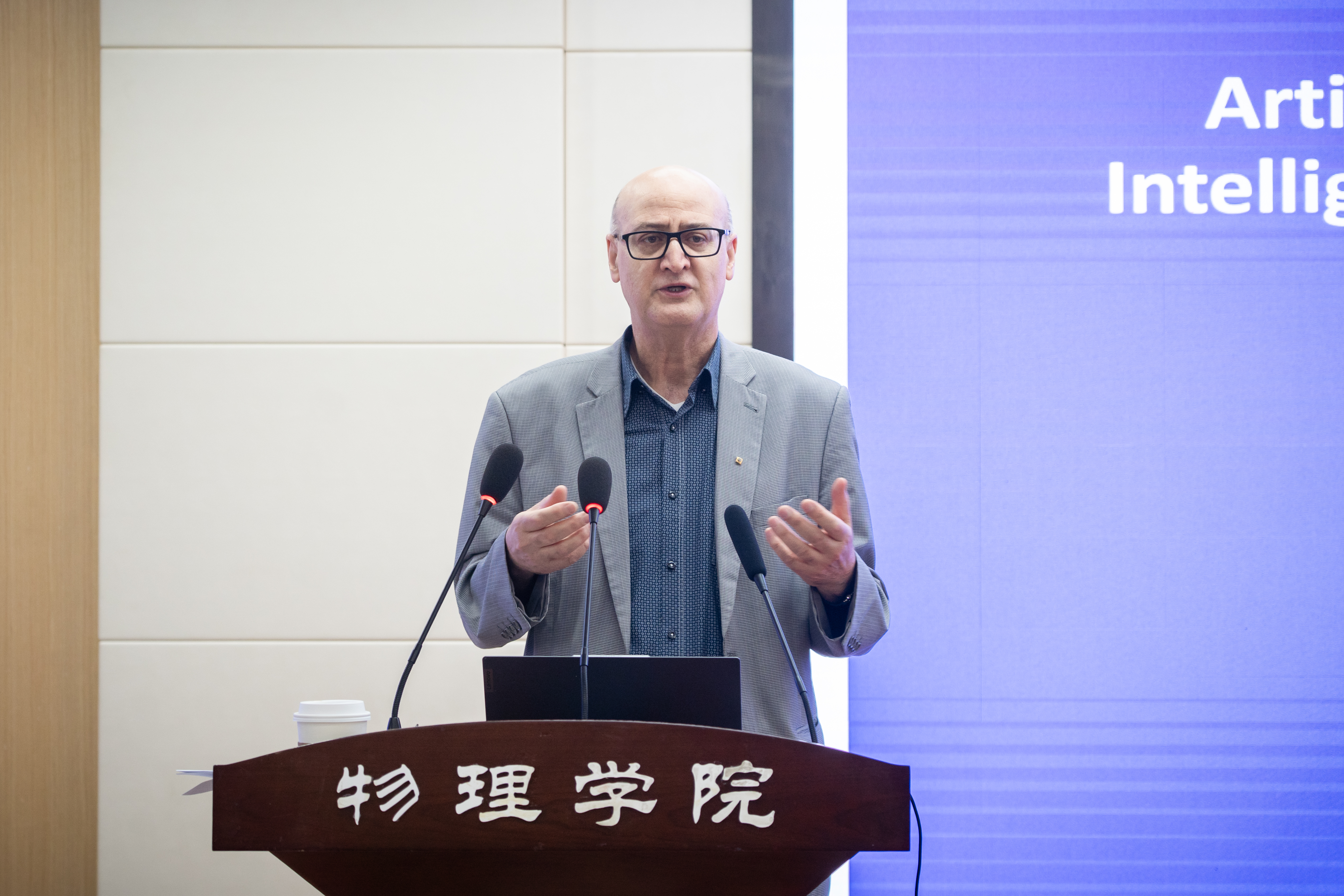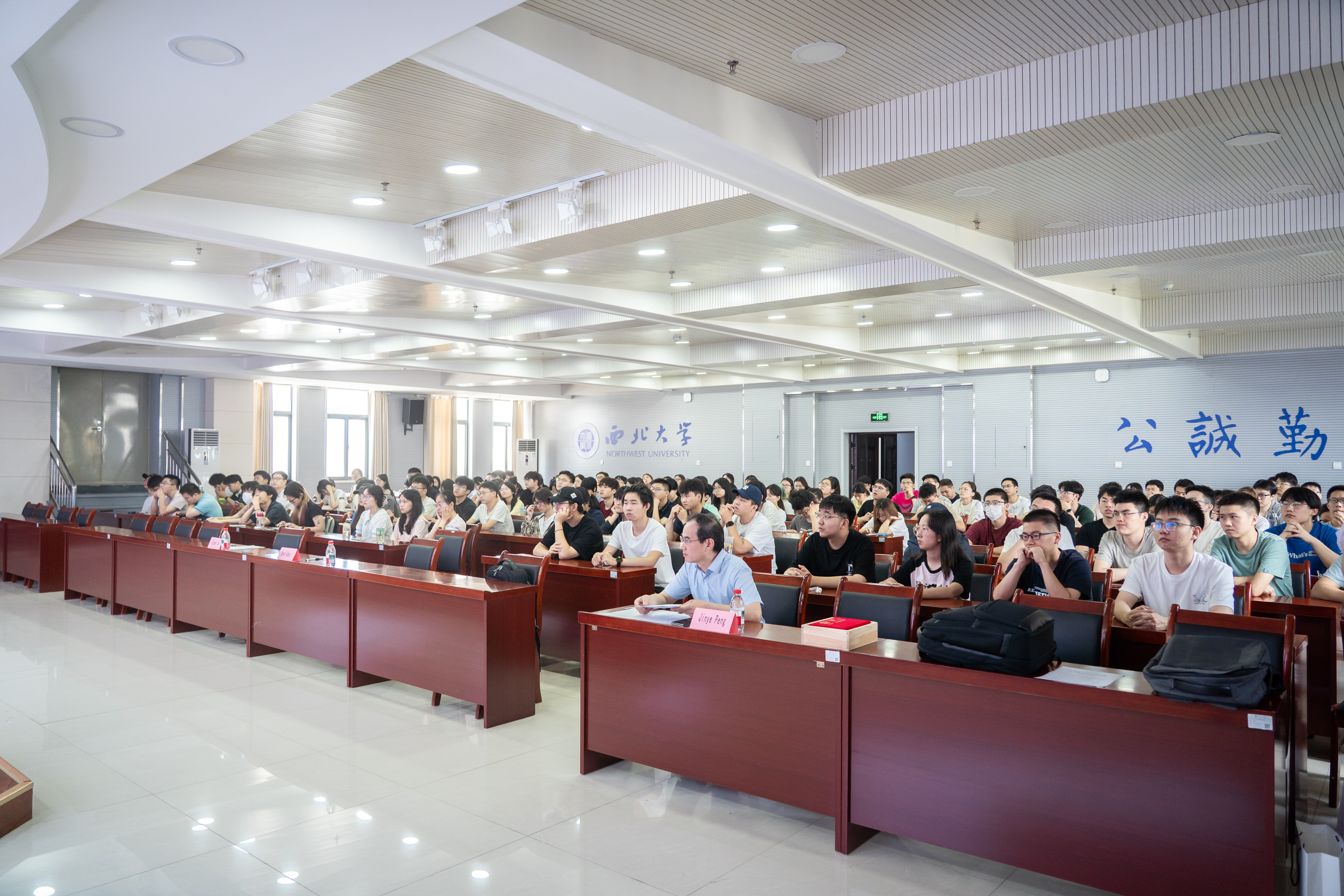On the afternoon of June 27, 2025, Academician Moncef Gabbouj of the European Academy of Sciences (EURASC) and Professor at the University of Tampere, Finland, delivered a lecture titled “Artificial Neural Networks in AI: From Inception to Dominance” as part of NWU’s “Yang Zhongjian Academic Lecture Series.” President SUN Qingwei delivered welcoming remarks on behalf of the university and presented Academician Gabbouj with a commemorative plaque for the lecture series. Heads of relevant university departments, faculty, and student representatives attended the event.
In his lecture, Academician Moncef Gabbouj traced the evolution of Artificial Neural Networks (ANNs), highlighting milestone breakthroughs: from the first biologically inspired neuron model proposed by W. McCulloch and W. Pitts in 1943, to Frank Rosenblatt’s single-layer perceptron and learning algorithm (1956), Widrow and Hoff’s ADALINE improvements (1959), Minsky and Papert’s breakthrough in solving complex logical problems (1969), Seppo Linnainmaa’s prototype of modern backpropagation (1970), and the deep learning revolution pioneered by Geoffrey Hinton, Yann LeCun, and others in the 1980s–1990s (notably the application of Convolutional Neural Networks, CNNs). This trajectory vividly demonstrated how international exchange and collaboration drive original innovation and transformative advancements in science and technology.
He emphasized that researchers must proactively engage in global scientific exchanges and cooperation to elevate fundamental research capabilities (e.g., understanding the mathematical foundations of neural networks) and master core technologies (e.g., efficient learning algorithms, model architecture design). This, he noted, is essential for achieving scientific and technological self-reliance and addressing global challenges.



